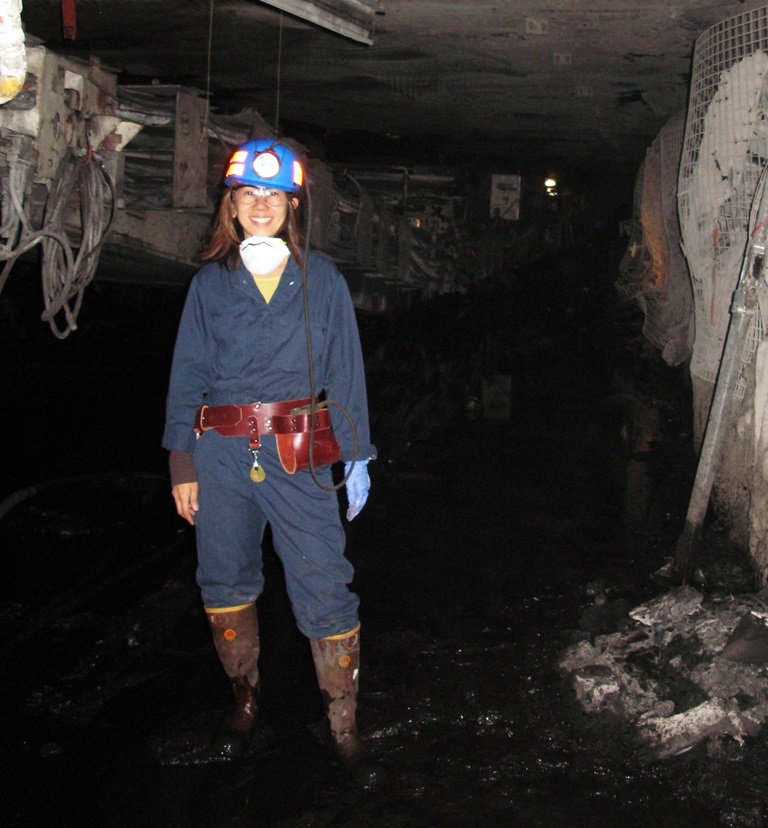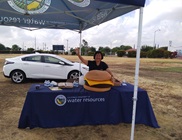DWR Celebrates Asian Pacific Heritage Month
Chi Doan, DWR principle engineer and chief of state and federal compliance for the State Water Project. 
It’s estimated that the California Gold Rush brought close to 300,000 people from all over the world to our state in the mid-19th century. Among them, were some of the first Asian immigrants to enter the U.S. Like so many of the immigrants to California, they put down roots and became a critical part of the state’s history and development.
While some of these immigrants helped build the western portion of Transcontinental Railroad, others built some of the Delta region’s first levees, drainage ditches and floodgates. Between 1860 and 1880, Chinese workers drained and reclaimed 88,000 acres of rich river-bottom peat soil — ideal for agriculture, according to California State Parks
Places like Walnut Grove and Locke, in Sacramento County, became thriving Asian-American market places and communities by the early-20th century. Locke, a now 14-acre historic district, continues to be the last remaining rural Chinese town in the United States.
To celebrate Asian Pacific Heritage Month, the Department of Water Resources (DWR) is honoring the historical contributions made to the creation and management of California’s water supply by the Asian Pacific community and DWR employees.
“It’s very humbling to follow in the footsteps of those first immigrants,” said Melissa Pi, supervising engineer at DWR’s Division of Safety of Dams.
Pi, a second-generation Chinese American has spent the last 13 years at DWR providing oversight to the design, construction, and maintenance of more than 1,200 dams built in California after 1929. Although she has no relation to the immigrants who helped levee the waters of the Delta, she takes pride in knowing and continuing their legacy of helping make California an agriculturally rich state that delivers water to millions of residents.
“Knowing about the significant contributions of those early Chinese immigrants encourages me to work harder,” said Pi. “Keeping California rich in its natural resources and keeping its people safe while doing it are the favorite parts of my job.”
Educating people on the history and importance of maintaining California’s water resources is a big part of the DWR mission.
“The most important part of my job is connecting people with water,” DWR Guide II Julie Jaw said.
At the Romero Overlook Visitors Center in Merced County, Jaw spends her days teaching the public about the State Water Project (SWP) and federal Central Valley Project (CVP), the two main water delivery systems in the state.
Jaw, a Taiwanese immigrant, came to the United States to attend college in New York City in 1988. There she took her love of art and education to the City University of New York and majored in museum studies. She went on to intern at the Metropolitan Museum of Art and Brooklyn Children’s Museum and continues to paint Chinese brush art to this day.
“I was only planning to come to the U.S. to go to college and then go back to Taiwan,” she said. “The U.S. ended up having a lot of similarities to my hometown and I felt very connected here, so I stayed.”
“I recently developed a program connecting California’s water management to its history with the rice industry,” she said. “It’s called ‘A River Meets Rice’ and educates people on how rice grows in California’s floodplains and how DWR is working to restore those floodplains.”
Another important aspect of the Department’s work is that of 32-year DWR veteran Chi Doan who makes sure the SWP continues to deliver water to 27 million people and 750,000 acres of farmland, without altering natural habitats and ecosystems.
“I’m the chief of State and Federal Compliance for the SWP,” said Doan. “I’m a principal hydroelectric power utility engineer and am dedicated to keeping DWR in compliance with power related regulations that help reduce greenhouse gas emission to help the environment.”
“I lived in Vietnam until 1975,” she said. “My family left as Vietnam War refugees and only my father knew English. We came with minimal resources but determined on a better life.”
Doan says through her parents’ positive attitude and focus on education she quickly learned the English language and developed skills that are still with her today.
Doan commented that when she started working for DWR and learned the history of Asia’s connection with water management, it made her happy to know she’s now maintaining the legacy.
“When I visited Locke, I enjoyed learning of the Asian connection,” she said. “I very much enjoy the bounty our State’s water resources provide and am happy to be maintaining it.”
DWR honors California’s Asian Pacific heritage this month, and always. For more information about other Asian Pacific contributions visit https://asianpacificheritage.gov/.


